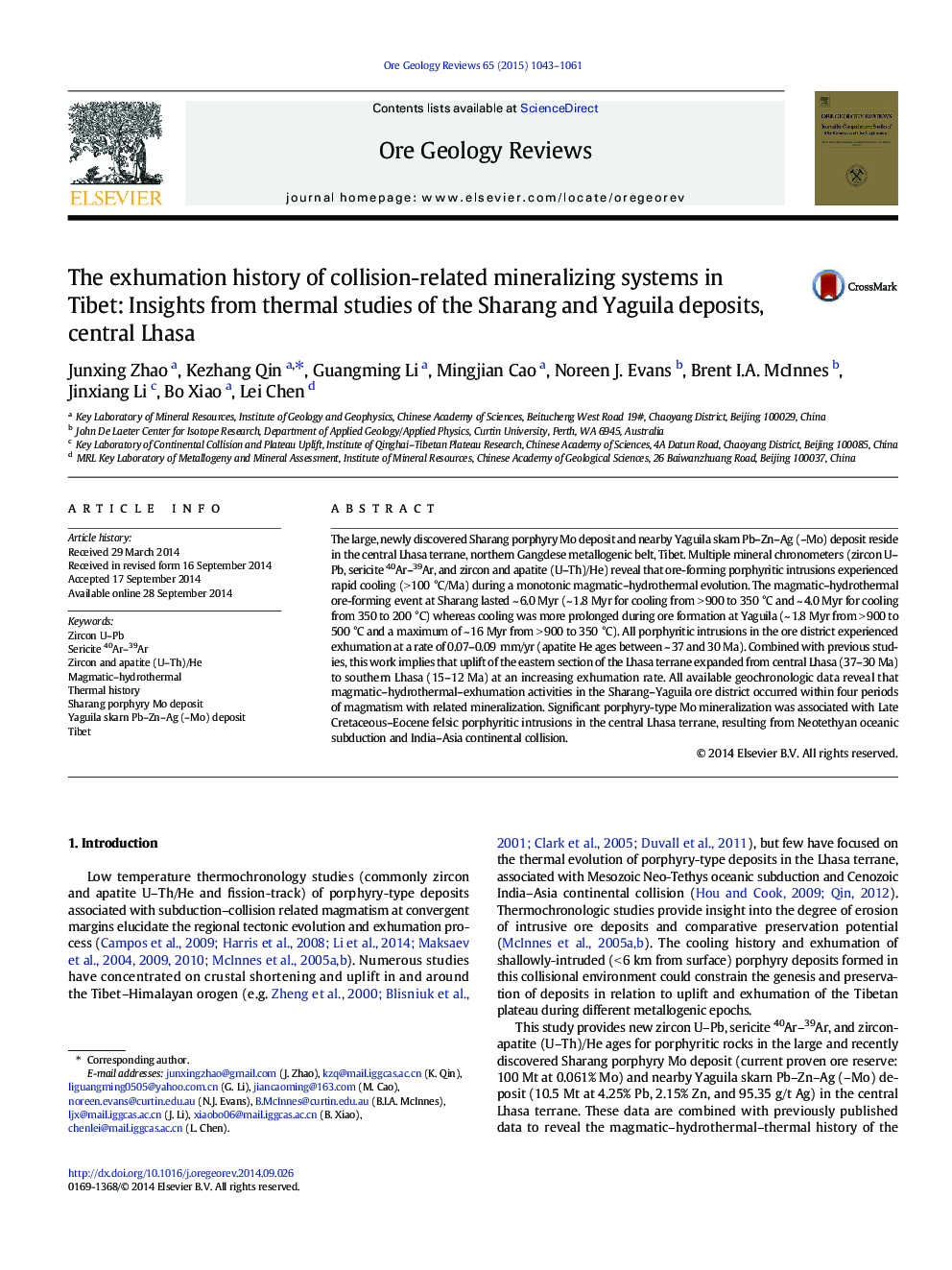| کد مقاله | کد نشریه | سال انتشار | مقاله انگلیسی | نسخه تمام متن |
|---|---|---|---|---|
| 4697160 | 1351864 | 2015 | 19 صفحه PDF | دانلود رایگان |
• Rapid-cooling, monotonic magmatic-hydrothermal evolution is revealed by multiple mineral chronometers.
• Exhumation rate in the Sharang-Yaguila ore district (0.07-0.09 mm/y) is estimated during 37-30 Ma.
• Four periods of magmatism with related mineralization are summarized in the district.
The large, newly discovered Sharang porphyry Mo deposit and nearby Yaguila skarn Pb–Zn–Ag (–Mo) deposit reside in the central Lhasa terrane, northern Gangdese metallogenic belt, Tibet. Multiple mineral chronometers (zircon U–Pb, sericite 40Ar–39Ar, and zircon and apatite (U–Th)/He) reveal that ore-forming porphyritic intrusions experienced rapid cooling (> 100 °C/Ma) during a monotonic magmatic–hydrothermal evolution. The magmatic–hydrothermal ore-forming event at Sharang lasted ~ 6.0 Myr (~ 1.8 Myr for cooling from > 900 to 350 °C and ~ 4.0 Myr for cooling from 350 to 200 °C) whereas cooling was more prolonged during ore formation at Yaguila (~ 1.8 Myr from > 900 to 500 °C and a maximum of ~ 16 Myr from > 900 to 350 °C). All porphyritic intrusions in the ore district experienced exhumation at a rate of 0.07–0.09 mm/yr (apatite He ages between ~ 37 and 30 Ma). Combined with previous studies, this work implies that uplift of the eastern section of the Lhasa terrane expanded from central Lhasa (37–30 Ma) to southern Lhasa (15–12 Ma) at an increasing exhumation rate. All available geochronologic data reveal that magmatic–hydrothermal–exhumation activities in the Sharang–Yaguila ore district occurred within four periods of magmatism with related mineralization. Significant porphyry-type Mo mineralization was associated with Late Cretaceous–Eocene felsic porphyritic intrusions in the central Lhasa terrane, resulting from Neotethyan oceanic subduction and India–Asia continental collision.
Journal: Ore Geology Reviews - Volume 65, Part 4, March 2015, Pages 1043–1061
